The History of Control and Automation Engineering at ITU
Istanbul Technical University Faculty of Electrical and Electronics Engineering initiated Control Engineering Undergraduate Education within the Department of Control and Computing Engineering which was established at 1982, in the engineering program. In our country, this is the only program that Control Engineering education has grown the control and system engineers who are the needs of modern industry at automation era up to the present.
The development of control engineering cover a period of 40 years starting with “Servomechanism” lecture given by the member of Electrical Faculty, Exercise Chair of the Electricity Industry Doç. Dr. M. Münir Ülgür at the beginning of the 1950s. With this development, ITU became the second university whose program obtained Servomechanism lecture after MIT among the world universities. After that, “Logic Control Circuits” lecture which is intertwined with automation had been given by Prof. Emin Ünalan.
According to scientific development in the world, the “Automatic Control” term was begun to use instead of Servomechanism in 1957, and Turkish National Committee for Automatic Control (TOK) in the organization of I.T.U has been founded as a member of International Federation of Automatic Control (IFAC). In addition, this organization has organized various events contributing to the development of the subject as national and international symposia and conference.
With the establishment of the Higher Education Council in 1982, the chairs in the universities raised and instead of this departments and divisions found. The Control System Department which was decided to take part of Control and Computer Engineering Department which is the one of the third department of I.T.U. Electric-Electronic Faculty was formed with combining “Exercise Chair of the Electricity Industry”, “Chair of Electrical Measurement” and some of the members of Maçka Electrical Faculty Control and Computer Engineering Department whose head is Prof. Dr. M. Kemal Sarıoğlu. Afterwards, this department was attached to Department of Electrical Engineering Faculty in the process of restructuring.
The theoretical and technological developments in the field of Control Engineering in recent years obliged to an independent program in the context of this important engineering education. According to academic development and application in modern countries, our university has opened the Control Engineering Program within the Electrical Engineering Department and began accepting students in 2001-2002. It was decided that Control Engineering Department was found as the forth department in I.T.U. Electrical Electronic Faculty by the Higher Education Council in 2007-2008 academic term.
The History of Automatic Control Systems

Automatic control system theory is associated with the feedback concept. A system is a set of elements that work together to accomplish a certain task. In a system, if the system output effects the system input rising or falling direction, a feedback system is to be obtained.
Although, it has been recently reached to consciousness of the feedback concept which forms the basics of dynamical systems (late 19th Century), It has been known, that this idea had been perceived and applied successfully since the old ages. In engineering, control system means that processing a system to a particular situation.
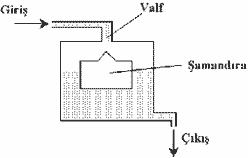
It is necessary to determine that, whether the existence of the feedback property, which is shown in figure 1, in the structure of a system to separate the automatic control systems which had been realized consciously or unconsciously since down the ages, from the open loop control systems. It was extended over Hellenism that outdated automatic controls which were tested their workableness and consciously designed in the documents or it was known that technically performed. The oldest technics are related to volume control in the water clocks. The aim here is that keeping constant the level of water which flows to the container of clock by a combination of valve and water gauge. Even though the original work of art of Ktesibios is lost, reconstruction of the control system used by Ktesibios can be acquired from Roman architect Vitriyius’s expression.
In the work of art, called Pneumatica, Filyon exemplified the oil-level controlling in the candle. In these schemes, the amount of air which enters the airtight oil tank is controlled by the oil level of the candle. Thus, oil level remains the same. The most interesting one is that Pneumatica is known with its Arabic translation which is located in Süleymaniye Library.
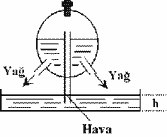
The third most important character related to automation history is Heron from Alexandria known that he lived in 1st century AD. In his work - named Pneumatica again – one can found the automatic control mechanisms along with automata. These control mechanisms and automata, especially which are designed to attract interest in the temples, to serve the special needs in public baths and to enjoy only in this century, had been appealed to the different scientific communities, especially the Islamic researchers in the following centuries. Based on the principle given above, there are several control mechanisms along with the water-gauge flush which has a water flow at a constant speed, and which forms an interesting regulator application (figure 4). It can be assumed that this water-gauge flush mechanisms has successful applications, especially on the water clocks.
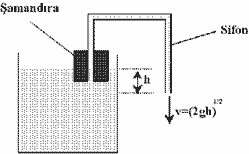
The impact of the scientific developments achieved in the Hellenistic era had been decreased in the Byzantium Empire, while it had become to prevail in Abbasids and in its environment. The sons of Musa Bin Şakir from Khorasan, named Muhammed Hasan and Ahmed is known as the Benu Musa “Sons of Moussa” in the science history. Benu Musa siblings are one of the key actors of the mathematical development during the period of the Abbasid caliph Memun (813-833) and the subsequent caliphs. The interest to the technology of the one of the siblings, Ahmed, is caused the book of Kitab-el Hiyal to be written (MS 850). In our country, this work can be found in the library of Ahmed III in the Topkapi Museum (A 3474). In this book, magical vessels, sprinklers, oil lamps, a densitometer, a bellows and a lifting mechanism are mentioned. The “magical mechanisms or magical automata” which is formed by the object, water and the air, is called in the Islamic world as “ilm al alat al ruhaniyet” (the science of pneumatic devices) or shortly “ilm al hiyal” (the science of magical mechanisms). According to the Akfani’s definition, the science of pneumatic devices is the science of manufacturing the devices based on the principle of not to possess any space. The aim is to training the minds while creating the mechanisms comprising the measured caps, the flushes and the other components.
In the book of Kitab-el Hiyal written by Benu Musa siblings, there are 100 mechanisms including 18
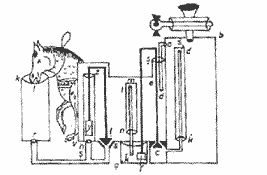
automatic control mechanisms. If they are examined in detail, it can be observed that they are technically perfect and can be even utilizable in the world of today. Since it is impossible to examine all the systems, let only the seventh mechanism be examined here, which is described as the water level regulator which possess approximately 2 liters of water. The function of the regulator is to regulate the level of the water at a constant level when up to 20 small cattle drinks water, whereas the water runs out even if one cattle drinks the water in it only (Figure 5).
The water flows to the mechanism to the funnel-shaped b faucet. When the water level reaches to the top of the k-s flush which is inside the a-b reservoir, the water passes to e-v reservoir from the s-c pipe and the c valve. Since the t valve is in the off position at the beginning, the water begins to rise inside the e-v reservoir, till the d point of the a-d pipe is plugged by the water, or the air flow to the a-b reservoir is finished. When the filling process is finished, the air leak-proof b faucet is turned off.
To activate the control mechanism, an amount of water is poured into the k-t trough, in which the small cattle drink water. This water passes from the r-ş pipe and it turns on the y water-gauge inside the h-z reservoir. In this way, the t valve is turned on and as the connection between the k-t trough and the e-v reservoir is made, the water level of the trough rises up to reservoir level. As predicted, when the small cattle drink water from the trough, the level of the water inside the trough is regulated continuously by the air flow from the d-a pipe to the a-b reservoir.
If a cattle, such as a horse or a bull attempts to drink water from the trough, the water level is risen by the sprayed water with the cattle’s mouth. When the water level in the e-v reservoir passes the l level in the n-l flush, the water in the reservoir begins to flow to k*-a* reservoir rapidly, by passing through the n-l-m-k* way. In this way, the f water gauges is turned on and plugs the c valve, thereby it is prevented the water level of the e-v reservoir from being regulated by the water in the a-b reservoir. All the water inside the k-t and the e-v reservoirs are drained to the r-v-s level and since the y water-gauge is turned off, the connection between the trough and the reservoir. The water of the reservoir poured into the k*-a* reservoir is drained by the “hole a” at the bottom of it. After this drainage, when the f water-gauge is turned off, the c valve is turned on, and the water in the e-v reservoir becomes to be regulated again. However, to activate the k-t trough again, an amount of water must be poured as at the beginning of the process, to turn on the y water-gauge and the t valve.
The whole mechanism is an astonishing implementation of the water-gauge valves and the air control mechanisms. The other control systems given in the book can be thought as the first examples of the water gauge valves which are widely used in the toilette flushes today.
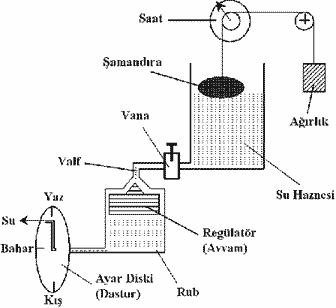
The water clocks was first used in the ancient Egyptians, and the dimensions of it had been increased time to time and became to be used in the Hellenistic era as the huge square-clocks. This tradition was sustained in the Islamic world and many technological developments had been achieved by the original implemented works and the written astonishing books in the beginning of the VIIIth century. Let the Eb-ül-iz from Cizre be introduced, who is the owner of the most detailed work about this issue. Known as “el Cezeri” in the Western, with the original name of “Bedi’el-ZamanAbu el-izz Ismail el-Razzaz el-Cezeri” is an engineer and a researcher worked as a palace engineer in the Diyarbakir Artuqids Palace. Today, we recognize him as the owner of the book named “Kitab-el Hiyal” in which he explained how to design the practical and the aesthetic implementations such as water clocks, automatic control mechanisms, sprinklers, blood collecting caps, encoded keys and the robots. We know from the preface of the book that he had served to Artuqids for 25 years during the period of Sultan Kuth el Din Sökmen II (1185-1200), and his brother Nasir el Din Mahmut (1200-1222), and he had finished his book in 1206. Today, the book can be found in the Ahmed III Library in the Topkapi Museum (A3472) which is the second-hand copy of the original book. This book includes six parts and fifty different mechanisms are explained in it.
The two of eleven clocks is composed of the ones which has automatic liquid flow controlled water clocks. In these clocks the regulators are used, which is invented by the Ktesibios. However, since the requirement in Islam to be partitioned the day (between the sunrise and the sunset) into twelve zones, a system that tunes the reference of the regulator according to the seasons is added to the mechanism (figure 6).
To explain the principle of the system, the required amount of water for tuning the mechanism of the

clock for a day or 12 hours, is hold in a cylindrical water reservoir. If the water can be drained in 12 hours regularly, the level of the water in the reservoir can be employed for indicating the elapsed time from the sunrise or the remaining time to the sunset. The level of the reservoir is connected to the clock face by an attached rope to the water gauge. The required friction force to tune the clock face is provided by the masses attached to the other end of the rope. When the sunrise moment, the valve at the bottom of the reservoir is turned on, therefore the reservoir water begins to flow the regulator reservoir (rub), in which there is a valve with a water gauge (avvam). Since the output part of the pipe of the regulator reservoir is narrower than the input part, the water level begins to rise and begins to plug the water gauge valve (avvam) pipe. Hence the operating conditions which is the equivalence between the input and the output flow rates, has been met in a small amount of time. However, the flow rate of the water draining from the reservoir, i.e. the level of the water in the regulator reservoir is directly proportional to difference between the water-gauge valve and the end part of the output pipe. Because of that reason, the output pipe is formed as to be freely rotatable around the center of a regulator disc (dastur). In the disc, the positions are recorded in which the output pipe must be hold according to the seasons. In the summer days, in which the daylight lasts long, the end of the pipe is turned to the upper side of the disc in order for the water to flow slowly. In the winter days, in which the days are shorter, the end of the pipe is turned to the lower side of the disc in order for the water to flow rapidly. In this way the water level of the regulator reservoir is tuned according to the seasons in the sense of the water drainage time. This actually connotes the change in the reference variable.
As can be observed from the Eb-ül-is example, a tradition about the automatic control systems had been applied, implemented and enhanced for centuries. However, in the late of VIII century, it can be observed that the scientific developments in the Islamic world had been slowed down, and had been abated rapidly after the Mongolian invasions. During the Crusades, the Western had transferred many technological developments from the eastern civilizations, and had caught up them, especially in the renaissance period. The last original researcher of the Eastern is Takiyüddin (1521-1585). He worked in the Beyoğlu Observatory which is founded by Murat III in 1579, and he studied in many areas, especially in the astronomy field. From these works, especially the one about the mechanical clock construction demonstrates the superiority of the Eastern in that field, compared to the Western in that ages. With the demolishment of the Observatory by the Sultan’s command, the last remaining research center of the Eastern was closed.
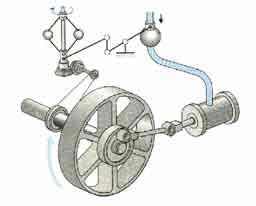
In the western civilizations, automatic control has been developed in the field of alchemy at first. The researchers in that field believed that the environment, in which the gold is synthetically produced, must be at a constant temperature. From that aim, Drebbel implemented the first autoclave in 1610. The method was applied to the brooders (Reaumur, 1750) and the steam boilers (Henry, 1771; Bonnemain, 1777). Even though the important developments about the level control in the Hellenistic era and in the Muslim world, the level control was almost invented again and was applied to the steam boilers in the XVIIIth century (Brindley, 1758; Polzunov, 1765). The pressure control is developed by the invention of Papin, which similar to pressure cooker in 1707, and the methods of Delap (1799), Murray (1799), Boulton and Watt(1820) found application areas in the steam boilers.
The velocity control applications had first observed in the mills in United Kingdom. Being inspired by a local technology, the developed method is built on the rotating ball pendulums. It can be observed that this compound, named governor, was employed in many patents (Mead, 1787; Hooper, 1789). This method had its place in the steam engine of Watt (1788) and had preserved for a long time. The fact that the examination of the governors by Maxwell (1868) and Routh (1877) constitutes the basics of the control engineering theory. Thanks to the applications and the creativity of these theorists; as many concepts for the analysis of the control systems are based on these findings.
The rapid development of the control theory and the control theory after the industrial revolution can be seen in detail in the studies of S. Bennett [7 - 8]. Today, the control engineering has an inevitably important position, in the possible future technologies.
References:
- Mayr, Otto; "The Origins of Feedback Control", MIT Press 1970.
- Hill,Donald R.;"The Book of Knowledge of Ingenious Mechanical Devices"-Reidel,1974.
- Hill, Donald R.; "The Book of Ingenious Devices" - Reidel, 1979.
- Ünver, Süheyl A.; "İstanbul Rasathanesi"-Türk Tarih Kurumu Yayını, 1969.
- Bir, Atilla; "Kaynak Dergisi", 1983.
- Dorf, Richard C. ve Bishop, Robert H.; "Modern Control Systems", 1998.
- S. Bennett; "A History of Control Engineering: 1800-1930", IEE Control Engineering Series 8, Peter Peregrinus Ltd. 1979.
- S. Bennett; "A History of Control Engineering: 1930-1955", IEE Control Engineering Series 47, Peter Peregrinus Ltd. 1993.